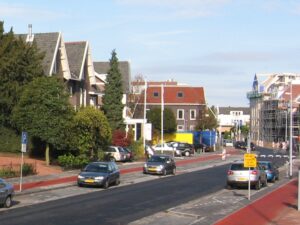The below is a transcript of UNOGAI director Elna Ødegaard’s opening lecture for the 2020 WCAIR.
The Smart City has the future. However, to implement the concept of the Smart City, municipalities need an underlying infrastructure and a reliable network of connections. This network ensures efficient communication between cities and promotes innovation in all areas, from transport, education, health care and public safety to education and transport.
AI can provide the smart insights that cities need to minimize the burden on existing infrastructure, prevent environmental damage, minimize traffic congestion, prevent urban crime, and improve hygiene. The quality of AI already encourages many urban planners to use it to minimize congestion and manage parking. Simply put, IoT with AI, we are able to make informed decisions about how much the population is growing and what to do about it.
In the future, AI could be used to address even more factors affecting the viability of cities. Besides functionality, there are many other aspects of urban planning that can be improved and practicable through the use of artificial intelligence.
Over the next five decades, we will see the adoption of artificial intelligence in all areas of our lives, from health care and education to health care, education, and the economy. Artificial intelligence is an emerging technology and will act as a technological innovator in the foreseeable future. It will influence the future of virtually all industries and people.
Machine learning and computer visuality are used to detect and classify various security events. These shoebox-sized devices don’t see everything, but they see a lot, and they see not only the objects in front of them, but also the people around them. For example, such devices can automatically detect the presence of a suspicious item in a warehouse, such as a fire extinguisher, and the warehouse manager can act immediately.
Simply put, artificial intelligence can help urban planners plan their cities better. This is done by letting planners know more about how the city is used and how it works. AI allows autonomous surveillance, but also allows decisions to be made based on the behaviour of various elements of urban life, how they change over time and how they respond to urban systems.
According to a recent report from the University of California, Berkeley, these findings can help cities minimize congestion, reduce air pollution, and increase the success of their initiatives.
By reducing crime rates, protecting citizens’data and improving public safety along the roads, tapping into dark data and using artificial intelligence will transform what the public sector can offer its citizens. AI to improve cities seize opportunities will pave the way for a better future for every community on the planet. With AI, cities can move closer to a smart city future where every aspect of their operations, from public transport to public health and education, is smart and efficient.
The ability to ask data-driven questions is key to confident decisions on education, legislation, and public investment, and to more effective positive outcomes that keep local government organizations on the front line of the future. It may seem daunting for small communities to use technologies made possible by artificial intelligence, but the truth is that states and municipalities are already taking action. If your government is not one, now is the time to develop talent and education, to get a feel for data, to know and develop the data that brings it to light.
So how can artificial intelligence (AI) help unlock the Smart City concept, and how can we be sure that smart cities will not be stolen from future generations? This question we will see answered through 2020’s World City AI Ranking competition. We congratulate the twenty finalist cities and look forward to seeing their developments!



